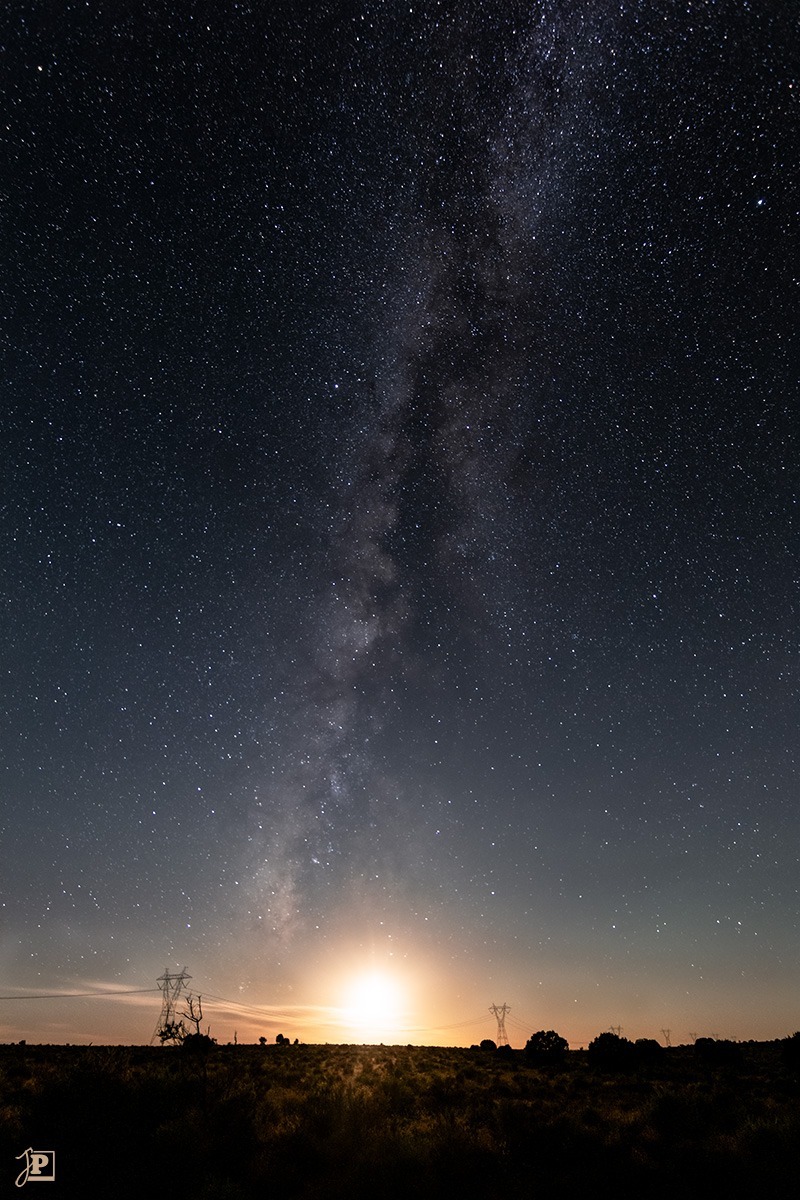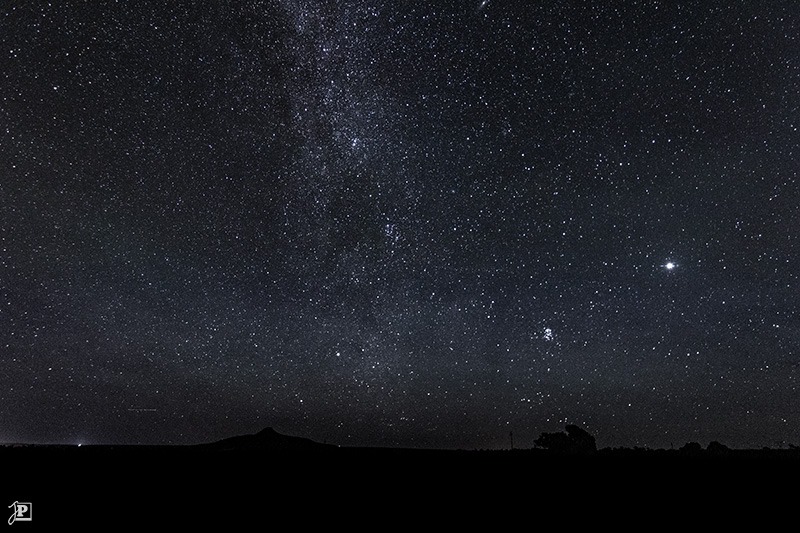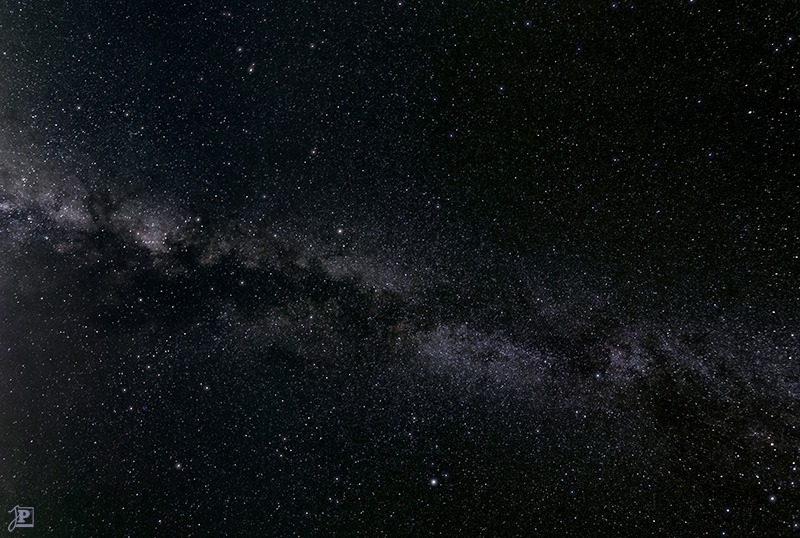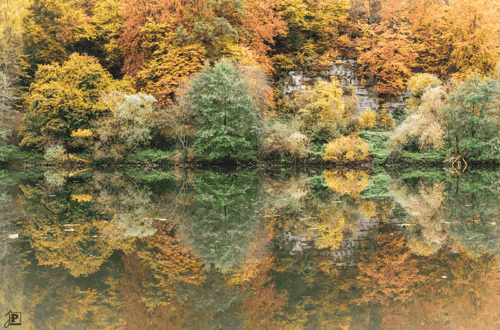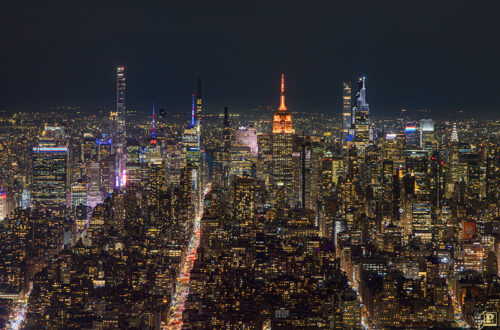Stars over Arizona
Arizona, especially the area around the Grand Canyon, not only impresses with its landscapes during the day, but also at night with an incomparable starry sky.
The thing about light pollution
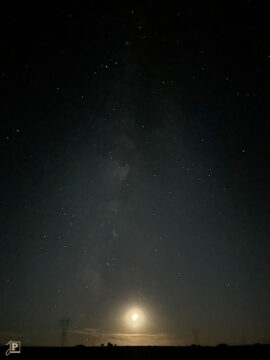
If you want to photograph stars at night, there’s one thing that gets in the way here in Germany, apart from the weather: light. Around big cities like Frankfurt, you can only see the brightest stars even when the sky is clear, and not a trace of the Milky Way. Sure, you can go out into the fields on the outskirts of the city, where it’s a bit better, but especially in low-lying areas such as the Rhine plain, the often hazy air gets in the way.
If you want to know how bad the air pollution is at home or anywhere else in the world, you can find comprehensive information on the internet at lightpollutionmap.info. The Bortle scale is used for classification. It ranges from class 9 (inner-city sky, only the brightest stars visible) to class 1 (excellent dark sky, center of the Milky Way so bright that it casts shadows). For orientation: in Weiterstadt, where I used to live, we are at class 5 (suburban), and even here in the Odenwald we are still at class 4 (brighter rural). Here you can see the Milky Way in the southern sky with the naked eye.
I have experienced an excellent night sky once so far, in 2015 near Albuquerque. That was the first time I had photographed the Milky Way. When I had the opportunity to combine a business trip to Phoenix, Arizona, with a visit to the Grand Canyon last fall, it was clear that I wanted to do that again.
So I took a look at the light pollution map and sure enough: around the town of Tusayan, where I had planned to spend the night, “Bortle Scale Class 1” was shown. The fact that the area is at an altitude of about 6,000 ft., as well as the dry, desert-like air, promised additional clear visibility.
Stars over Arizona

Unfortunately, my tour didn’t leave me as much time as I had hoped. Because of my meetings, I couldn’t leave Phoenix until midday on Thursday and had stopped several times on the way north. I didn’t want to miss the “Red Rocks” near Sedona and the landscape also invited me to take a break or two. Hence, the shadows were already quite long as I approached my overnight destination on Arizona State Road 64.
There are fantastic photos of the starry sky over the Grand Canyon – but I realized that I wouldn’t have the opportunity to search for suitable locations in advance. So I made a mental note of some of the side roads along route 64, because even if there was no interesting foreground to be found here, it was still possible to look all the way to the horizon without obstruction.
When it was dark enough an hour after sunset, I set off again. And immediately after leaving the village I realized: it is really dark here. Without lamps, signs or other landmarks, it was extremely difficult to find the junctions and side roads that were still clearly visible during the day. About ten miles south of Tusayan, however, I found a good place to take a photo.
The setting quarter moon lit up the scenery enough at first so that I didn’t need a flashlight to set up the tripod. Once my eyes had adjusted to the darkness, the starry sky was absolutely breathtaking. You could clearly see the Milky Way across the entire sky to the northern horizon. Many familiar constellations were difficult to make out, simply because they were lost in the multitude of stars. And a test image made it clear: it’s even dark enough here to take a hand-held photo of the Milky Way with a cell phone. With a cell phone!
In the meantime, I had set up my camera on the tripod with the ultra-wide-angle lens that I had bought in 2015 especially to photograph the Milky Way for the first time, and took several series of pictures of different sections of the sky. At home, I then stacked eight or more images in Photoshop to create a single photo in order to reduce the image noise caused by the high ISO values.
If I make it to the Grand Canyon again, I will certainly take the night shots from one of the many viewpoints along the road through the national park, now that I know the local conditions.
The Results
In the short time available, and without the opportunity to choose a viewpoint with an interesting foreground in advance, the resulting photos are not particularly exciting. Nevertheless, the image of the Milky Way with the setting moon is one of my favorites from this trip. And the photos keep the memory of this great night sky alive.
